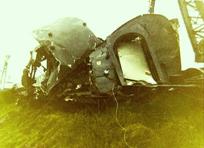This is Steven Nyes eye witness account, recollected in September 2000, of the Marden train crash on the night of the 4th January 1969.
He was only 16 at the time and it is a night that he will never forget for as long as he lives.
Pictures of the crash by Trevor Simmons
“The evening of Saturday 4th January 1969 was cold and very foggy, although there was no frost. I was spending the evening with two friends, Pete Judge and Chris Peen. We had been in the “Chequers” pub for a drink or two, the landlord there was sympathetic to our ages as long as we behaved and did not cause any trouble. At about 8.40 pm we left to make our way home as our parents were quite strict in those days. As we walked home we suddenly heard a terrific rumbling noise like thunder in the distance. Of course the weather conditions were completely wrong so we knew it was not thunder. It was obvious that it was a major disaster of some kind. I had a strange feeling that it might have been a train crash and I suggested this to the others. At first they were scornful but as they could not come up with a better idea we agreed to run to the station and find out. This we did, as we were close anyway.
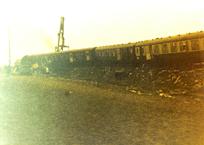 When we arrived at the station we told the Clerk what we thought had happened but he had not heard anything as he was in his office with the radio on and all the windows closed against the winter night. I think he suspected that three teenagers slightly the worse for drink were attempting a windup! Anyway, he sent us on our way and we left to make our way home still wondering what had caused that terrible noise.
When we arrived at the station we told the Clerk what we thought had happened but he had not heard anything as he was in his office with the radio on and all the windows closed against the winter night. I think he suspected that three teenagers slightly the worse for drink were attempting a windup! Anyway, he sent us on our way and we left to make our way home still wondering what had caused that terrible noise.
We had not got far when the Fire Siren up in the High Street began to blare out and once again we started guessing at what had happened. Suddenly Chris had an idea. As his father was in the Fire Brigade he knew that they always wrote down the callout in a logbook in the Fire Station. He suggested that we go down and have a look. So down to the Fire Station we ran. When we arrived, the fire engine had just left: we heard it roaring down Pattenden Lane with its siren screaming. Chris took us into the Fire Station and into the office. We looked at the logbook and there it was, “Train crash, Brook Farm.” As we read the words the reality dawned on us that a very serious accident had occurred and we decided to return to the station to see if we could help in any way.
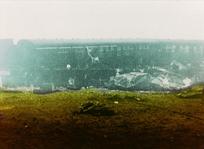 When we arrived at the station, the Clerk had received the news about the crash, so we asked if we could go and help. At first he was not sure but after a short while he received a telephone call from the signal box at Tonbridge informing him that the power had been turned off and the line closed to all trains. He asked if we could go and the signalman said that we could, providing that we made ourselves known to the police who would be there by now. As we were talking, a man staggered into the station from the platform. His face was a complete mess of cuts and bruises and he could hardly walk. He had walked from the crash site to raise the alarm, not knowing that this had already been done. I will always admire this man’s bravery in trying to help the people in the crash. He could not have known where the crash was or how far he would have to walk. He must have staggered blindly through thick fog and total darkness to reach the station. He left in an ambulance later on so I hope he was OK.
When we arrived at the station, the Clerk had received the news about the crash, so we asked if we could go and help. At first he was not sure but after a short while he received a telephone call from the signal box at Tonbridge informing him that the power had been turned off and the line closed to all trains. He asked if we could go and the signalman said that we could, providing that we made ourselves known to the police who would be there by now. As we were talking, a man staggered into the station from the platform. His face was a complete mess of cuts and bruises and he could hardly walk. He had walked from the crash site to raise the alarm, not knowing that this had already been done. I will always admire this man’s bravery in trying to help the people in the crash. He could not have known where the crash was or how far he would have to walk. He must have staggered blindly through thick fog and total darkness to reach the station. He left in an ambulance later on so I hope he was OK.
Feeling a lot more apprehensive now we carefully made our way along the platform and down onto the railway track. After a short distance we were in total darkness as the lights of the station fell behind us. We knew that Brook Farm was about a mile down the line but that walk in the thick fog and cold darkness seemed much further. A bravado left by the alcohol was drained away in that cold, dark walk and nervousness was beginning to take over. I think that by now we all wanted to turn back but no one would suggest it so on we went. After about twenty minutes walking there suddenly loomed out of the fog a huge diesel engine with its engine turned off but still ticking as it cooled in the fog. We saw that it was a mail train with boxcars stretching into the darkness. We carefully made our way alongside it towards the rear where we could now make out sounds and some light in the fog. As we walked along we noticed damage to the wagons, slight at first but getting worse with each one. The light was brighter by now and we could see two fire engines in a field with their spotlights turned on. The scene they were illuminating was one of total devastation: in the dim light it was difficult to see what had happened but after a while we realised that another train had run into the back of the mail train. There was wreckage everywhere and we learned later that an express running fast from Charing Cross to Ashford had collided with the mail train, which had stopped for some reason. I never did find out why.
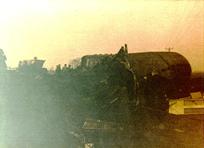 As we took in the grim scene we were approached by a police officer and we told him that we had come to help. He thanked us and told us that we were almost the first on the scene as the emergency services were having difficulty finding the spot due to the fog. Only a couple of local fire engines had arrived so far. He told us that they were going to evacuate the passengers through the farmyard and some farm workers who had heard the crash were pulling out fences to get the people out. Because of the soft ground the only way to get the injured people to the farmyard was by tractor and trailer. There they would be treated and taken in ambulances to hospital.
As we took in the grim scene we were approached by a police officer and we told him that we had come to help. He thanked us and told us that we were almost the first on the scene as the emergency services were having difficulty finding the spot due to the fog. Only a couple of local fire engines had arrived so far. He told us that they were going to evacuate the passengers through the farmyard and some farm workers who had heard the crash were pulling out fences to get the people out. Because of the soft ground the only way to get the injured people to the farmyard was by tractor and trailer. There they would be treated and taken in ambulances to hospital.
The policeman told us that we could help get the less hurt people across the field to the nearest place the tractors could stop. We were quite happy to do this, as it was better to leave the serious injuries to the experts who were arriving all the time. Apart from that we were by now all scared stiff! As we looked around there were groups of people dotted about, some dazed and disorientated. Others were crying and shaking with shock. Some were bleeding from head wounds and some had fallen into the mud as their legs were so shaky. We began to lead them carefully across to the waiting tractors. Some could barely walk properly and we had almost to carry them. The field was wet and soft and it was hard work. We soon became plastered in mud ourselves but it didn’t matter of course.
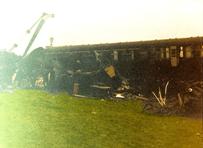 When we had a chance we looked at the wreckage and it was obvious that people had died in there. The front carriage had totally disintegrated and the second one had split in half lengthways with one half sticking straight up into the air! We were surprised to learn later the next day that only four people had lost their lives, including the driver of the express train, although there were many serious injuries. I think that it was lucky that there had not been many people in the front part of the train or it would have been much worse.
When we had a chance we looked at the wreckage and it was obvious that people had died in there. The front carriage had totally disintegrated and the second one had split in half lengthways with one half sticking straight up into the air! We were surprised to learn later the next day that only four people had lost their lives, including the driver of the express train, although there were many serious injuries. I think that it was lucky that there had not been many people in the front part of the train or it would have been much worse.
After some time, perhaps an hour or so, we realised that there were dozens of firemen, ambulance and police on the scene and we decided that we would go home. We made our way up into the farmyard, which was crammed with ambulances and other emergency vehicles. We also saw a coach that had come to take the uninjured on their way. We were luckily offered a lift back to Marden, which we gladly accepted. After arranging to meet the next day, we all went home, arriving well after midnight with lots of explaining to do to worried parents! Then it was off to bed but of course I did not sleep much that night.
The next day we met up again and decided to go and see the crash in daylight. We made our way back along a track which runs alongside the railway, and when we arrived the clean up operation was in full swing. There was a huge crane lifting the damaged pieces away and lots of workmen scurrying about. As the crane lifted one section I saw a man pick up something red and slimy and put it in a plastic bag. I had no idea what it was, I can only guess. Deciding we had seen enough, we made our way back home.”

